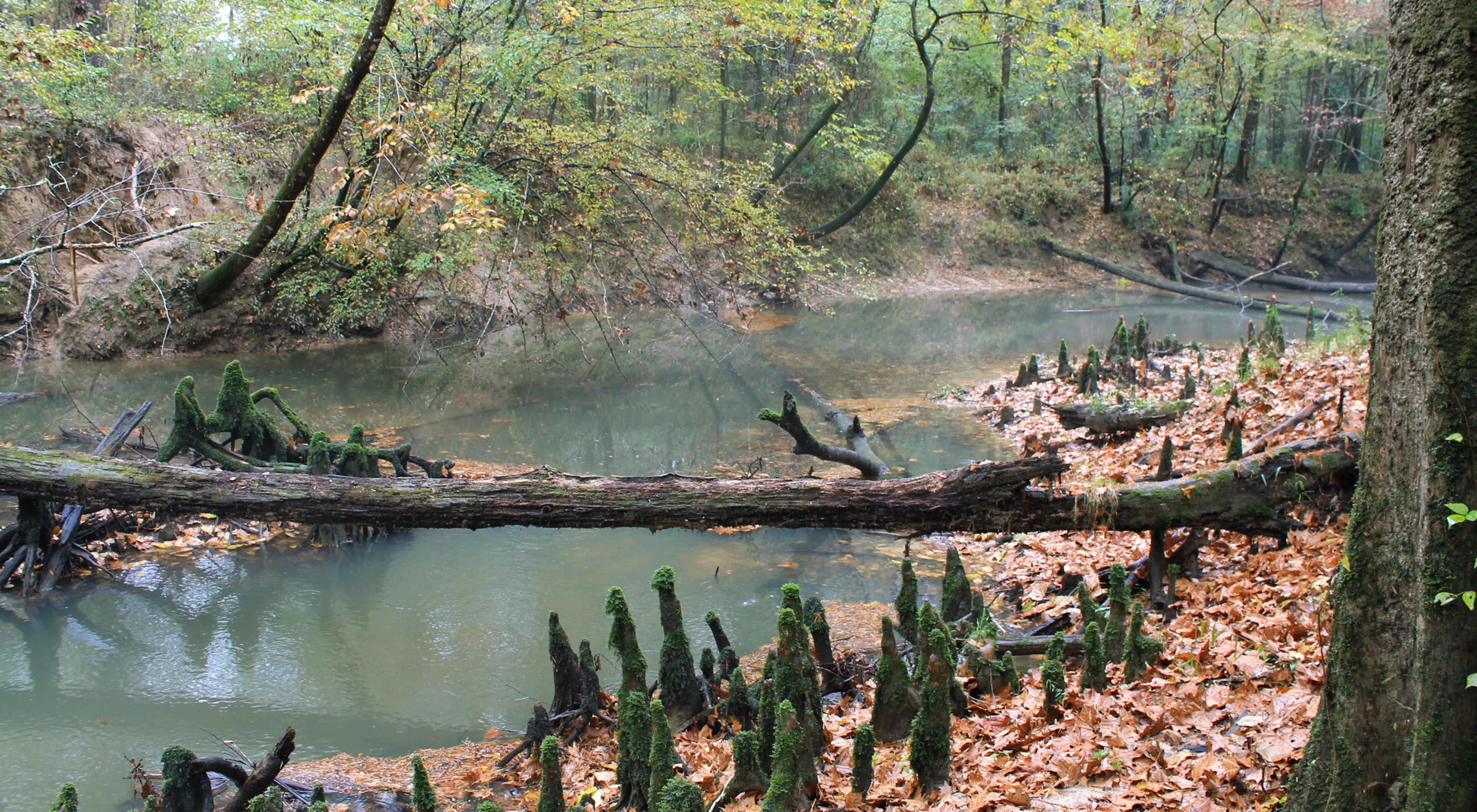Description
Caves are a rarity in Mississippi, but home to bats and other cave-dwellers important to healthy ecosystems. Scientific research starting in 2004 has lead to cataloging the area's plants and animals and mapping more than 200 feet of passagesincluding stalactites, flowstone and rim stone.
Scientists are removing non-native species such as cogongrass to allow native vegetation types to sustain healthy populations. Many of the plants are rare here, but found more readily in more northerly climates.
Plants
Some rare plants found at the Cat’s Den Cave Preserve:
- Allegheny spurge (Pachysandra procumbens): Evergreen ground cover; prefers evenly moist soil
- Three-birds orchid (Triphora trianthophora): Named for the three flowers typically borne on each plant. All plants in the same area typically bloom on the same day, with the flowers only lasting one day.
- Silky Camellia (Stewartia malacodendron): Small tree with showy three-inch white flowers
- American ginseng (Panax quinquefolius): Rare medicinal plant threatened by habitat destruction and over-harvesting
- Blue-needle palm (Rhapidophyllum hystrix): Small shrubby, trunkless fan palm; grows to 6 feet in height; threatened by commercial exploitation
- Wild ginger (Asarum canadense): Once used by Native Americans to flavor foods, but not related to present-day culinary ginger
Animals
- Cave Crickets
- Bats
- 3-lined salamander
- Central newt
- Slimy salamander
- Bird-voiced tree frog
- Southern leopard frog
- Gray tree frog
- Ground skink
- Ringneck snake
- Western cottonmouth
Researchers reflect a variety of disciplines and institutions, including the Mississippi Museum of Natural Science, University of Southern Mississippi and Mississippi State University.
For more information on Cat's Den Cave, please contact Becky Stowe, Director of Forest Programs.
